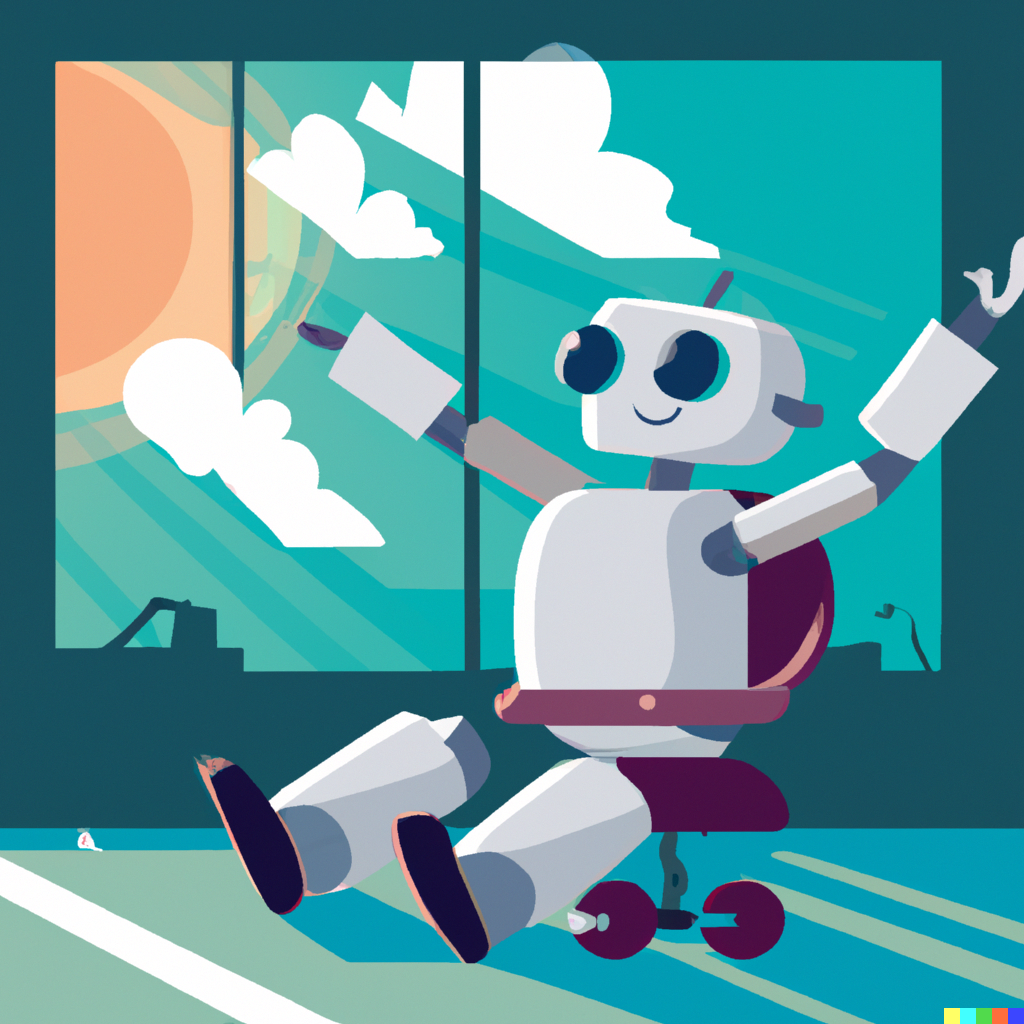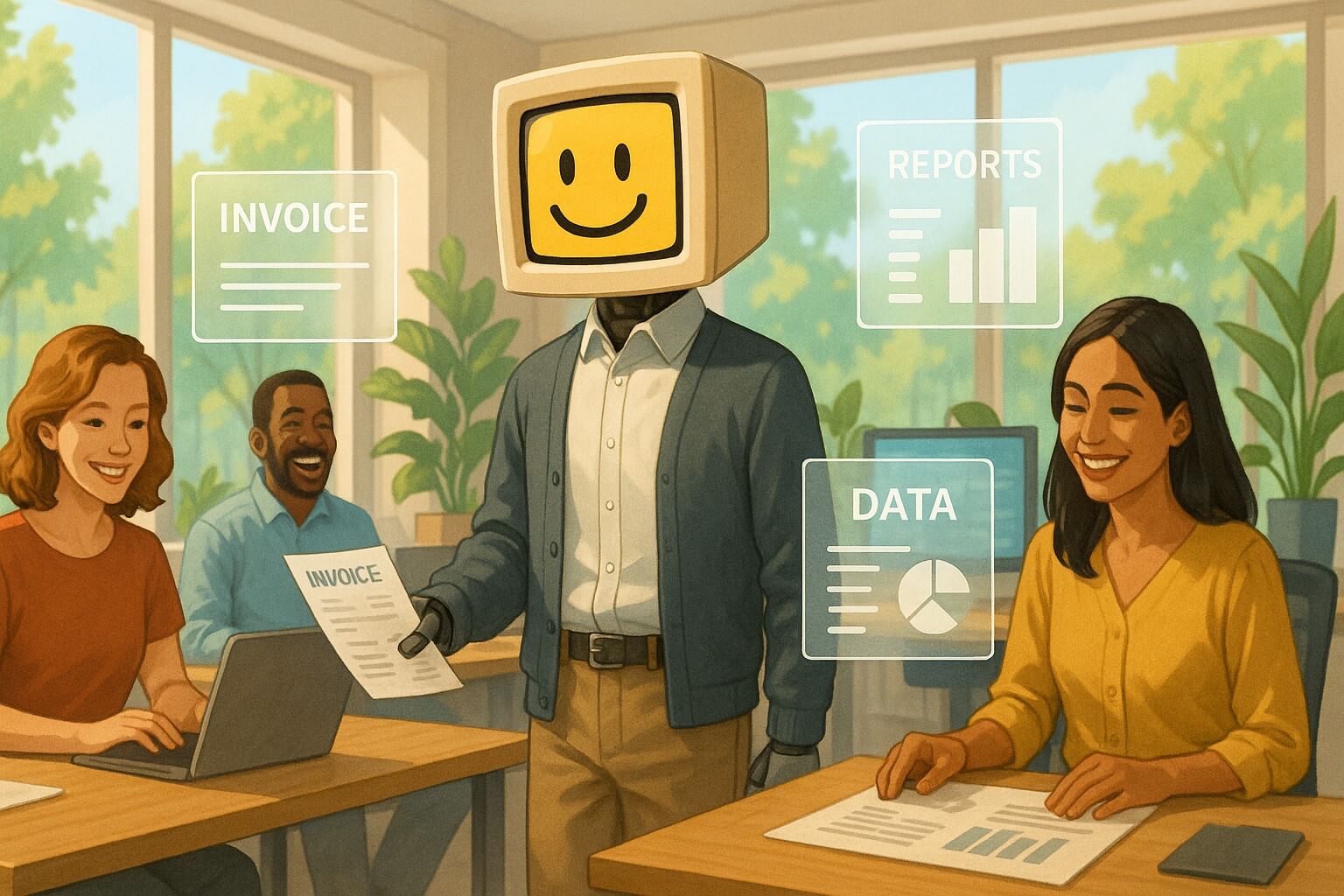When is a Person Necessary Versus When Can AI or Automation Carry Out That Task?
Explore the key differences between human workers and AI automation, and discover how combining both creates powerful hybrid workflows that empower employees while scaling your business.

As businesses race to modernize and scale, one critical question keeps coming up: When do you actually need a human, and when can AI or automation handle the job?
The answer isn’t as simple as “replace everything with robots” or “humans must do it all.” The truth lies somewhere in between—and understanding this balance can be the difference between struggling to scale and building a powerhouse operation.
How People and AI/Automation Are Different (But Similar)
At first glance, humans and AI seem worlds apart. But they’re actually both information processors—they just excel in different ways.
Humans are incredibly flexible. We can handle messy, unexpected situations with ease. When data comes in a weird format, or context is unclear, or something completely new happens, people adapt. We understand nuance, pick up on emotional cues, and make judgment calls based on years of accumulated wisdom and intuition.
AI and automation, on the other hand, thrive on repetition and specificity. Give them a well-defined task, and they’ll execute it faster and more accurately than any human could. But throw them a curveball? They might struggle—or worse, make a critical error.
The magic happens when you understand these complementary strengths and use them together.
The Hybrid Approach: AI Does, Humans Approve
One of the most powerful patterns emerging in modern business is the human-in-the-loop model:
- AI or automation carries out the bulk of the work—processing data, making calculations, identifying patterns, and preparing outputs
- A person reviews, verifies, and approves—ensuring accuracy, applying context, and making the final call
- The system executes based on human approval
This approach gives you the speed and accuracy of automation while keeping human judgment where it matters most. The AI handles the heavy lifting; the person provides the guardrails.
Think about invoice processing: automation can extract data from thousands of invoices, match them to purchase orders, and flag exceptions. But a person reviews flagged items, approves legitimate invoices, and investigates anomalies. The result? What used to take days now takes hours—or minutes.
The People Problem: Overhead, Hours, and Turnover
Here’s the reality many business leaders face: people are amazing, but they come with constraints.
A human employee can only work so many hours in a day. They need training, management, benefits, and support. And depending on your industry, you might face high turnover—constantly hiring, onboarding, and training new staff just to maintain capacity.
Want to scale up for a busy season? You need to hire temporary workers or contractors, which means more recruiting, more training, more overhead. Want to scale down? You’re stuck with difficult conversations and potential knowledge loss.
Humans are creative, intelligent, and invaluable—but managing them requires significant resources.
The Automation Advantage: Scale Without the Headaches
Compare that to AI and automation. Once you’ve built and tested your automation, scaling is almost trivial.
Need to process 100 invoices instead of 10? Just run the automation more times. Need to handle 10,000? Spin up more instances. There’s no hiring, no training period, no benefits to manage. It’s essentially copy-paste scaling.
You don’t worry about automation taking sick days, requesting vacation, or leaving for a better opportunity. The “employee” is always available, always consistent, always executing exactly as programmed.
Of course, you still need people to design, monitor, and improve these systems—but you need far fewer people than you’d need to do the work manually.
When People Are Absolutely Essential
So does this mean we automate everything? Not quite. There are specific situations where human judgment is irreplaceable:
High-Stakes Decisions
When the potential harm from an incorrect decision is significant—like approving a large financial transaction, diagnosing a medical condition, or making a legal determination—you want a human in the decision seat.
Approval and Authorization
Even if AI identifies what should happen, certain actions require human authorization. This isn’t just about accuracy; it’s about accountability and control.
Complex, Novel, or Ambiguous Situations
When something unusual happens that doesn’t fit established patterns, humans excel at figuring out what to do. We can think creatively, apply broader context, and make judgment calls that go beyond the rules.
Customer Relationship and Empathy
When someone is upset, confused, or needs reassurance, human empathy and communication skills are essential. AI can route, categorize, and even draft responses—but the human touch often makes the difference.
The 80/20 Rule: AI Does 80%, Humans Do the Rest
Here’s a powerful way to think about modern work: for many roles, AI and automation can handle 80% of the repetitive, rule-based tasks.
That remaining 20%? It’s the judgment, the exception handling, the creative problem-solving, the relationship-building—the distinctly human work.
Instead of hiring five new people to handle increased volume, imagine giving your current team automation that handles 80% of the grunt work. Suddenly, each person can manage what used to require multiple employees. They’re not bogged down in data entry and routine processing—they’re making decisions, solving problems, and adding real strategic value.
You’re essentially giving your employees superpowers. They can accomplish more in less time, with greater accuracy, and with less burnout from tedious work.
The Future: Automate Everything You Can
So where is this all heading? The trend is clear: automate as much as possible, and keep humans focused on what they do best.
Companies that embrace this philosophy will be able to scale faster, operate more efficiently, and compete more effectively than those stuck in purely manual processes.
There’s a joke I like to tell: “Do you still have people working in your company? Then you haven’t automated everything!”
It’s tongue-in-cheek, of course—companies are made of people, and that won’t change. But the point stands: if you’re serious about growth and efficiency, you should constantly be asking, “What else could we automate?”
The goal isn’t to eliminate people. It’s to eliminate the tedious, repetitive work that keeps people from using their unique human abilities—creativity, judgment, empathy, and strategic thinking.
Conclusion: The Best of Both Worlds
The question isn’t really “person or AI?” It’s “how do we combine people and AI to create something better than either could achieve alone?”
- Use AI and automation for speed, scale, and accuracy in repetitive tasks
- Keep humans for judgment, approval, exception handling, and relationship work
- Build hybrid workflows where AI does the heavy lifting and people verify and approve
- Empower your team to do more by eliminating the grunt work
- Scale your business without proportionally scaling headcount
The businesses that thrive in the coming years won’t be the ones that choose between humans and automation. They’ll be the ones that master the art of combining both.
So ask yourself: What tasks in your business could AI handle 80% of? Where do you really need human judgment? And how can you give your employees superpowers by automating the rest?
The answers to these questions might just transform your entire operation.



